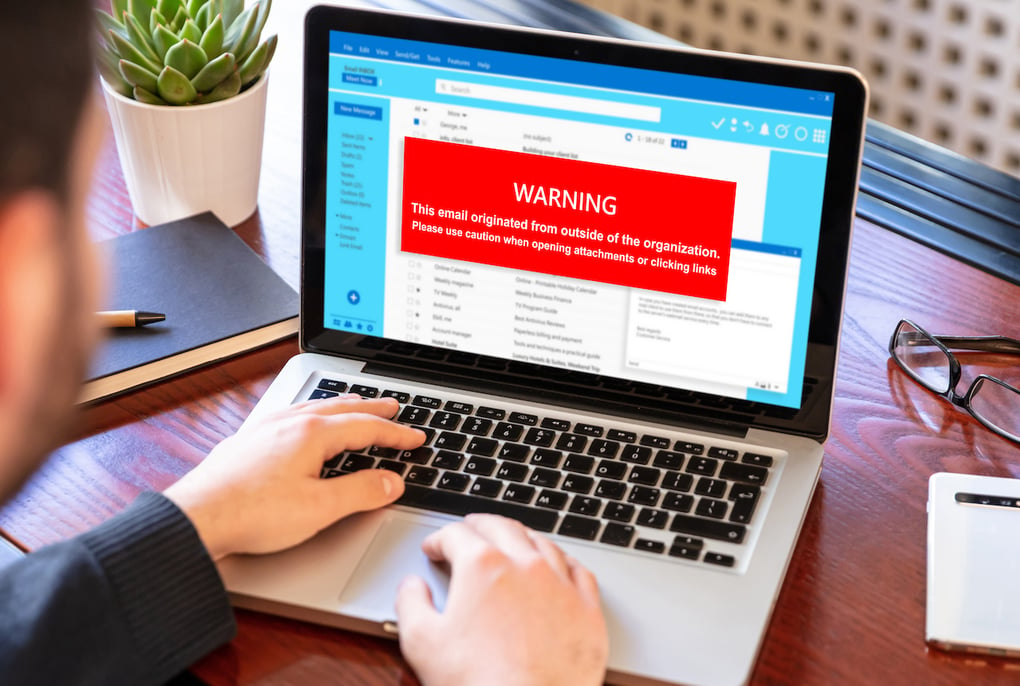As businesses become more reliant on technology, cyber threats have become increasingly sophisticated. Among the most insidious of these updated and devastating attacks are phishing emails.
Phishing emails are designed to appear like legitimate messages from trusted sources or individuals, but their intent is far from benign—often seeking to pilfer sensitive information for nefarious purposes.
Developing the skills to recognize and effectively steer clear of these threats is of paramount importance. This comprehensive article delves into exactly how to identify phishing emails, offering key insights to help you navigate the treacherous waters of digital communication.
Unmasking Phishing Emails: A Comprehensive Guide
Follow these tips to unmask a malicious email sender!
1. Scrutinize the Sender’s Email Address
A fundamental step in identifying phishing emails is to meticulously examine the sender’s email address—going beyond the surface display name. Cybercriminals often employ clever tactics such as utilizing addresses that bear striking resemblances to legitimate ones, replete with minute misspellings or added characters.
Keep a vigilant eye out for anomalies like “support@amaz0n.com,” where a zero replaces the letter ‘o,’ signaling potential danger.
2. Analyze the Email Content
Phishing emails frequently exhibit distinctive traits, including:
- Grammar and Spelling Errors: The presence of poor grammar and spelling mistakes can be indicative of a fraudulent email.
- Generic Greetings: Legitimate correspondences typically address you by name, whereas generic openings like “Dear Customer” should raise suspicion.
- Urgent or Threatening Language: Beware of messages coercing swift actions or invoking fear of dire consequences to manipulate your decisions.
3. Exercise Caution with Email Attachments
If you are looking for better ideas on how to identify phishing emails, analyze your attachments. Attachments within unsolicited emails can harbor malware. To avoid compromising your security, refrain from opening attachments unless you are expecting a file and are absolutely certain about the sender’s authenticity.
4. Hover Over Hyperlinks
Before clicking on any hyperlinks within an email, hover your cursor over them to reveal the underlying destination. If the hyperlink’s actual destination doesn’t align with the displayed text or seems suspicious, exercise restraint, as it could indicate a phishing attempt.
5. Safeguard Personal Information
It’s important to note that legitimate organizations will never request sensitive information via email. Be wary of any email soliciting personal or financial details, as these are classic hallmarks of phishing attempts.
6. Verify Directly from the Source
When in doubt, initiate contact with the purported sender using alternative methods of communication, rather than relying on contact details furnished in the suspicious email.
For instance, if you receive an email from your bank, make a direct call using the number on the back of your card instead of the one provided in the email.
7. Report Suspicious Emails
Play an active role in curbing phishing threats by promptly reporting suspicious emails. Mark them as spam in your email client and raise awareness among colleagues, as these deceptive emails often target multiple individuals within an organization.
Empower Others with Your Knowledge: Refer Weber TC and Extend the Shield!
As a valued client of Weber TC, you’ve experienced the benefits of our cutting-edge services firsthand. Now, it’s your chance to share your wisdom and protect others from phishing threats.
Everyone needs to know how to identify phishing emails! Extend your safety net to friends, family, and colleagues by referring them to Weber TC.
By doing so, you’re contributing to a safer digital environment and equipping them with the tools to recognize and thwart phishing emails effectively. In a world where digital security is paramount, your referral could be the catalyst for a safer online experience. Join us in transforming digital journeys, one referral at a time!


